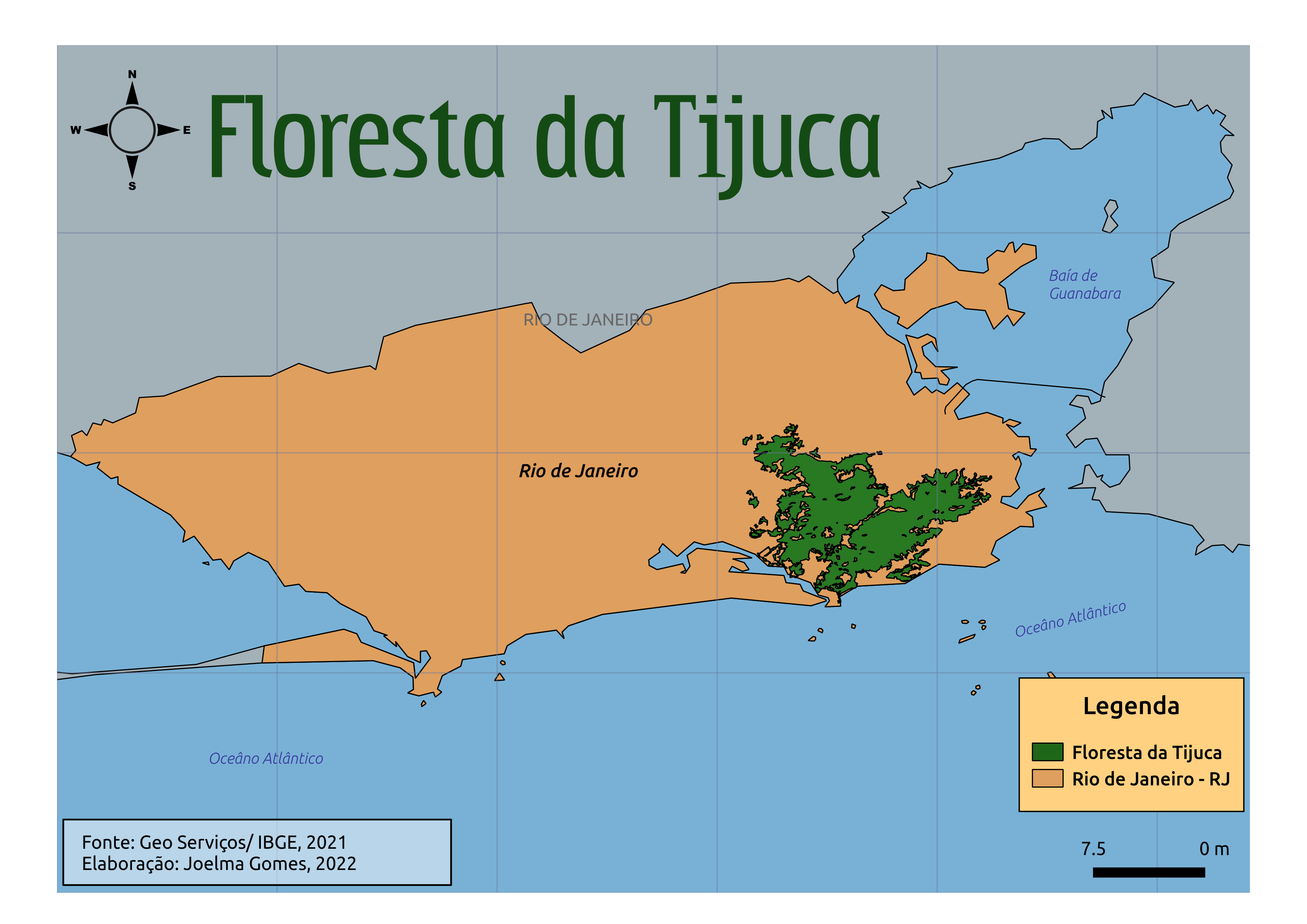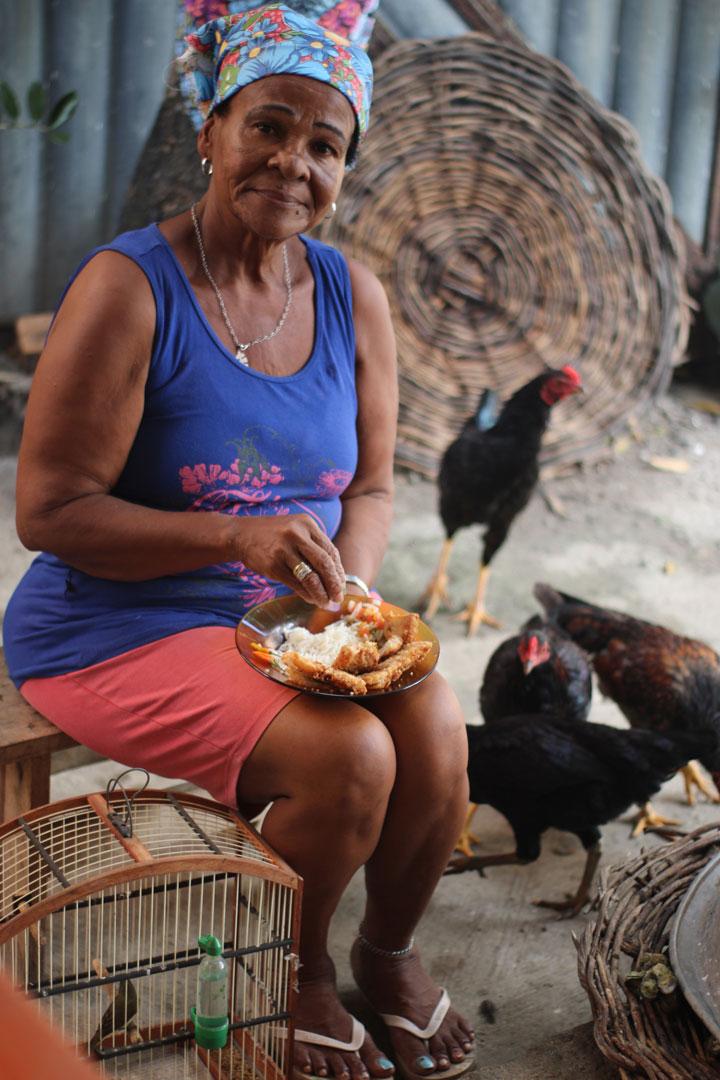After an intense week in the residency program that introduced me to new spaces and people, I decided to go out on my second Sunday in the city of Rio de Janeiro and direct my body to the Tijuca Forest. I needed to feel its energy, hear its sounds, touch its plants, walk at the leisurely pace between its instinct-guided trails. I lacked that place and the apprentice place where the forest gently reinforced itself in my being. As I am made of a waterfall, my emotions moved like water, which bubbles from the water hole, emerges conquering space, circumvents obstacles, until it expands and finds the point of balance and evasion.
I went down Santa Tereza towards the Tijuca Forest, intoxicated with so much emotion that for a moment I felt the presence of my grandmother by my side, walking hand in hand with me, just like she used to do when we went to the forest to pick cashews and licuri, in Acupe, in Bahia. She was with one hand in mine and the other with a machete opening and clearing the way. Always teaching and pointing out the place I should step on and which way to step, never too hard, but with lightness and respect for the abode of other animals and beings. She taught me with every gesture and look to be kind and gentle to nature that allows us the right to life, endowed with fullness. So much so that I remembered the African proverb that she always used, which says: “no big tree has reached the size it is without first having been a seed”. And being a seed (apprentice), I followed…
On this day, when leaving the confluence of sounds that inhabit the crossroads of the city, I allowed myself, when entering the forest, to enter the poetic and ancestral trance, to feel that I was in a dancing experience. Being rocked by the sound of atabaques, by the prayed chant, a symphony composed and intertwined by the charms of the times, the winds, the currents that strong and cold echoed the song of Mameto Dandalunda, a playlist composed exclusively to feed and establish the balance of the my orí, who was constantly immersed in the whirlwind of stimuli that makes it sick, gets tangled up in roots that are not healing.
Feeling myself in the process of healing, I started to walk, noticing the details of the leaves, their colors and shapes, the thick, tall trunks and their scars drawn by time and by human writings, these dated and with names. There were so many dashed hearts that it seemed impossible not to imagine the vows of love linked to the subjectivity of “may it be eternal while it lasts”.
Returning to the beauties that filled my eyes, I could notice the writings of the forest and how the crossing of the most varied species of trees, the strips of land and the layers of dry leaves form a watercolor of warm tones that mixed together like a kaleidoscope that changes with every move. I don’t know if I can adequately export the spiral of this experience that worked for me like an ebó that feeds the sacred and that strengthens us, but I hope to report it in a simple and profound way. Also because narrating about this experience requires from me some crossings due to the difficulties that are imbricated in the process of self-perception and of undressing in front of myself and the other.
With the silence broken, I rejoiced with happiness when, near a waterfall, I heard the Kabyle rhythm sound from the forest as if an atabaque was being played for the inkesses, sacred residents of this habitat that holds the elements that heal and purify. So much so that everywhere, there were ebós lowered, territorializing and demarcating ancestral practices in the African diaspora.
As I wandered among these energies, I could see, kind of suddenly, Dandalunda’s dance in the waterfall, which beautifully reflected the brightness, volume, movement and transformation. I drank from its sacred water, also amniotic fluid, wishing for the dissolution of insecurity, guilt, fears, traumatic memories, while I gently sang the restoration of my fertilities and the opening of my creative portal.
After hours of immersion, it was time to return to Vila Laurinda, but still on the way, near the S curve, I was crossed by a black woman who was in the company of three children. One child, who seemed to be 12 years old, was pushing the car full of bottles full of water, but from her expression, it wasn’t just water, it was a survival strategy, a guarantee of bathing. The mother carried on her head covered with a handkerchief, on the cloth roll, a 20-liter bottle balanced by maternal instinct, since her left hand held the hand of the other child who carried a 2 liter bottle very close to her little body. The third child, a girl who wore a pink dress with long sleeves, was holding two plastic bags, one with smaller bottles of water and the other with what looked like a banana. She walked at the hurried pace, forcing her still-developing body to be tough and quick.
For a few minutes I found myself in that girl again, I relived part of my childhood that was also marked by the constant search for water at Mr. Rosalvo’s fountain that allowed people to fill the water pots in their homes. In addition, it’s shameful to realize that the same difficulty of accessing water still remains, so violently. Hearing that in the favelas of Rio de Janeiro water does not arrive or is difficult to arrive.
On the border, in the delimitation that separates two territories – forest and city, there is discrepancy, mourning, absence, as well as knowledge, care and time. The time that surrounds everyone’s life, the time that lives in me and the time that each subject takes to find themselves. What can it be









